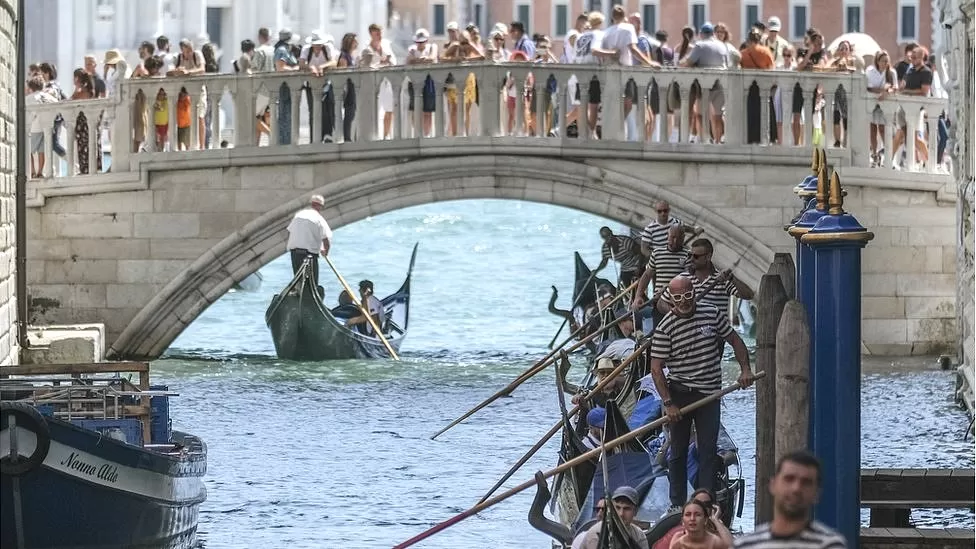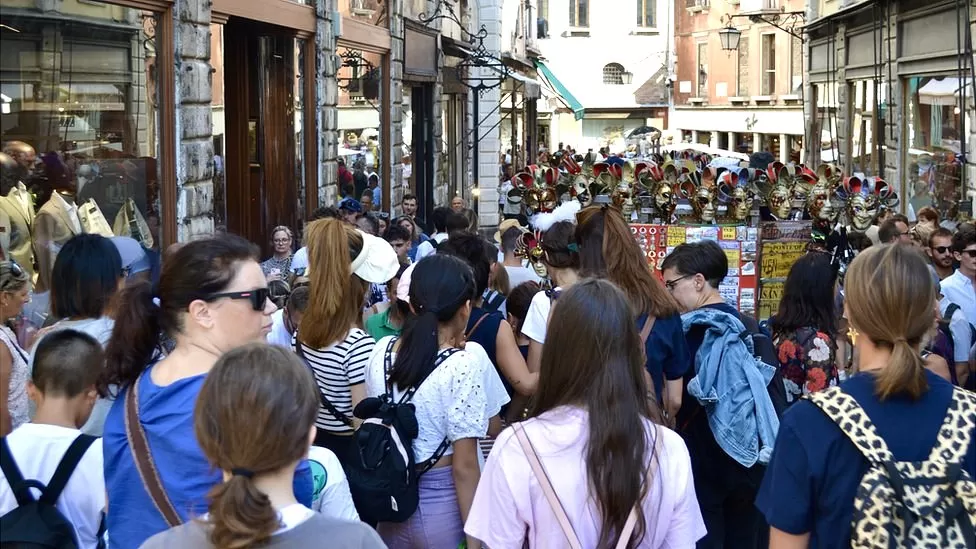The Italian city of Venice is expected to approve the trial of a €5 (£4.30; $5.35) daily fee for visitors, in a bid to control tourism.
All visitors over the age of 14 will have to pay the charge and book their entry to the city in advance. City council member for tourism Simone Venturini says the trial will run during peak tourist periods next year.
“Venice is among the most visited European cities… [and so] suffers the most from excess tourism,” he said.
Over-tourism is widely recognised as an urgent issue for Venice. The city is just 7.6 sq km (2.7 sq miles) in size, but it hosted almost 13 million tourists in 2019, according to the Italian national statistics institute. Numbers of visitors are expected to exceed pre-pandemic levels in the coming years.
“The objective is to invite daily tourists to choose [off-peak] days,” Mr Venturini said.
“We want to test [the fee] and, if needed, improve it. We cannot discuss for [an]other 40 years what's best to do.” Earlier this year Unesco said the city should be added to a list of world heritage sites in danger, as the impact of climate change and mass tourism threaten to cause irreversible changes to it.
In 2021, large cruise ships were banned from entering the historic centre of Venice via the Giudecca canal after a ship crashed into a harbour. Critics had also argued that the ships were causing pollution and eroding the foundations of the city, which suffers from regular flooding.
It is not clear, however, if the plan to introduce a daily charge will deter tourists. Karina, from Germany, said she would have no problem paying the fee. “We are on holiday, €5 is not too much.”
But other visitors agree something should be done.

“It's definitely crowded,” said Cal, a student from Ireland. “We went to the main square and we were planning on going to St Marks, but the line was too long.
“But I suppose €5 is quite a lot to walk around for a day.” More and more residents in Venice are choosing to leave, as tourists threaten to overwhelm the historic island city.
Valentini Rizzi, a PhD student at Iuav University, has lived in Venice for five years. She struggled to find a place to live, but eventually found a landlord willing to give a long contract to a student. Others, though, have not been so lucky.
“I know students who had to leave their accommodation in May or June, because their landlord wanted to rent the house to tourists during summer, and they could go back in October. That was their deal,” she said. Citizen associations Ocio and Venissa have launched studies to monitor the number of beds for tourists and the number of beds for residents in the city.
According to the most recent update, while there are 49,693 beds for tourists, there are 49,308 for residents – meaning that beds for tourists exceed beds for residents. Maria Fiano, a teacher who runs Ocio, said she was surprised by what the data revealed after her organisation began its study in April.
“In only five months, the number of beds for tourists increased by 1,000 units,” she explained. She said many former government buildings like the Chamber of Commerce have now been converted into hotels.
“It's a dramatic situation, because it marks the transformation from a city to a non-city, populated by temporary visitors.” Ms Fiano believes the way to tackle the issue is to limit rental accommodation for tourists. She is not convinced the daily fee will work.
“I think the measure by the town hall is smoke and mirrors,” she said.
— CutC by bbc.com


